QUESTION
Write a 2000 words statistical analysis on Panasonic Corporation
Country :: Japan
ANSWER
Panasonic Corporation
Introduction
Panasonic Corporation once known as Matsushita Electric Industrial Co., Ltd. is a Japanese worldwide gadgets manufacturer headquartered in Kadoma, Osaka, Japan. The organization was established in 1918 [1] as a maker of light attachments and has developed to wind up one of the biggest Japanese hardware makers close by Sony, Hitachi, Toshiba, Pioneer and Canon Inc. Notwithstanding hardware, it offers non-electronic items and administrations, for example, home remodel administrations. Panasonic is the world’s fourth-biggest TV maker by 2012 piece of the pie. Panasonic has an essential posting on the Tokyo Stock Exchange and is a constituent of the Nikkei 225 and TOPIX files. It has an optional posting on the Nagoya Stock Exchange.
After the war, Panasonic regrouped as a Keiretsu and provided the post-war blast in Japan with radios and apparatuses, just as bikes [2]. Matsushita’s brother by marriage, Toshio Yue, established Sanyo as a subcontractor for segments after World War II. Sanyo developed to end up a contender to Panasonic yet was later gained by Panasonic in December 2009.
Panasonic offers a wide scope of items and administrations, including air systems, coolers, clothes washers, blowers, lighting, TVs, PCs, cell phones, sound hardware, cameras, broadcasting gear, projectors, car gadgets, airplane in-flight amusement frameworks, semiconductors, lithium batteries, electrical segments, optical gadgets, bikes, electronic materials and photovoltaic modules. Ventilation machines, for example, electric fans are made under KDK and rebranded as Panasonic [3].
Panasonic Corporation moves for all intents and purposes the majority of its items and administrations worldwide under the Panasonic brand, having eliminated the Sanyo brand in the main quarter of 2012.
Being available in the shifted line of organizations has helped the organization in utilizing the skills of one business into other. It utilizes the blend of statistic, geographic and psychographic division factors to address developing open doors in the individual markets as needs be. Separating focusing on procedure is utilized by Panasonic to make the specific item accessible to the client according to their prerequisite. It utilizes esteem based situating technique which implies that their business logic is to convey an incentive for cash items to the clients.
Being available in such different between related organizations is helping the organization in investigating and utilizing the capacities of one another to fabricated abilities in the business [4]. Being available in the nations over the world aides Panasonic in gaining admittance to such a various market and the client amass which encourages organizations to build up the item implied for some other nation and can be an aggressive/inventive offering in different markets.
Basic Network
Being a global company, the network of company is diluted around the globe. It has manufacturing operations in multiple regions of the globe [5]. Panasonic corporation has multiple offices around the earth for operations and sales and one can find many head offices of the company in almost all of the continents with some countries themselves having multiple offices.
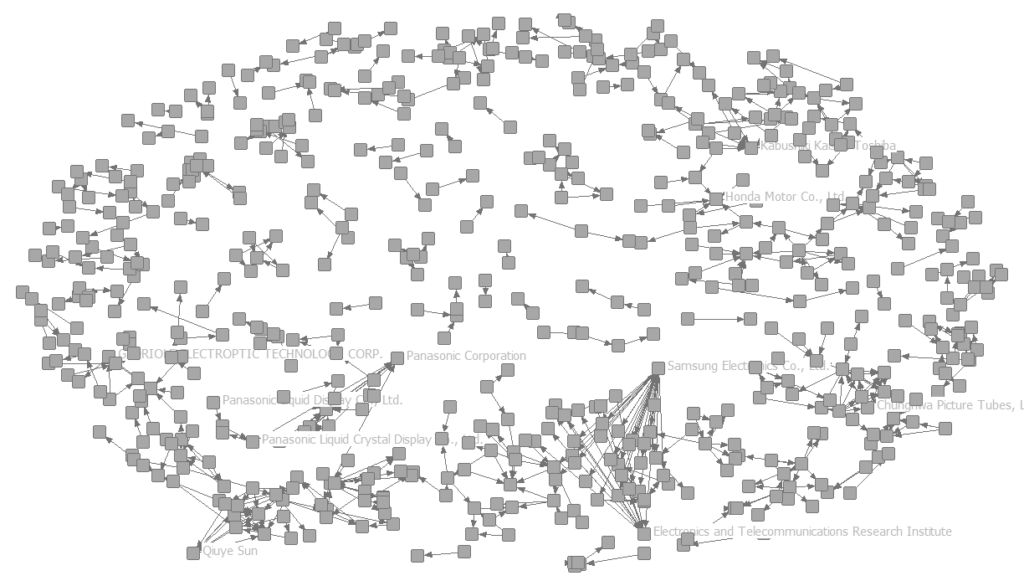
Figure 1: Panasonic Network
Figure 1 shows the basic network of the company where we can see that it has large number of nodes in its network and there are multiple centres. The diagram also shows that the many nodes are connected to multiple nodes representing segments which work with multiple other nodes. The competitors of the company can also be seen in the diagram like Samsung Electronics which also is connected to large number of nodes. Thus, Panasonic is in an industry and thus a network where a single entity interacts with many large numbers of nodes. These nodes form small groups around which many more nodes are concentrated.
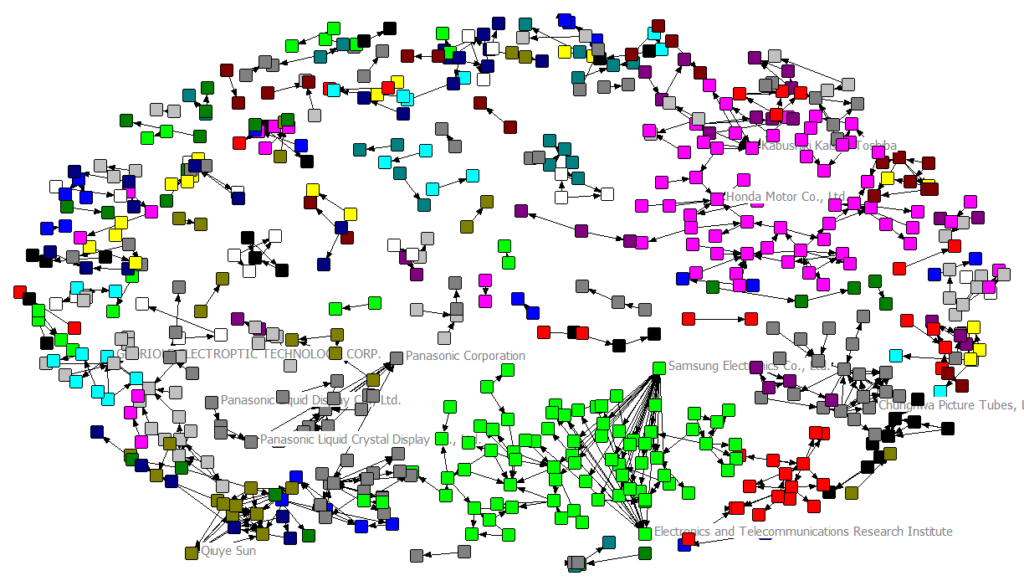
Figure 2: Component Analysis
The component analysis of the same showed the presence of a total of 161 components which can be seen in figure 2. Here we can see that the competition of Panasonic actually forms a larger component in the form of Samsung electronics and Panasonic itself is not the largest component. There were a total of 76 nodes in the component which contained Samsung whereas the component containing Panasonic was smaller than 65 nodes. There are many components with very small number of nodes in the component as well. The component sizes ranged from 2 to 76 showing a very large range in the network itself. Thus, it will be difficult to understand the influence of any node in the network, and specially Panasonic, without the use of a centrality measure in the network graph.

Figure 3: Degree as centrality
Over the component analysis we superimposed a centrality measure of degree. Verifiably first and reasonably least complex is degree centrality, which is characterized as the quantity of connections occurrence upon a hub (i.e., the quantity of ties that a hub has). The degree can be translated as far as the impending danger of a hub for getting whatever is coursing through the system, (for example, an infection, or some data). On account of a coordinated system (where ties have course), we more often than not characterize two separate proportions of degree centrality, specifically indegree and outdegree. As needs be, indegree is a tally of the quantity of binds coordinated to the hub and outdegree is the quantity of ties that the hub coordinates to other people. At the point when binds are related to some positive viewpoints, for example, companionship or coordinated effort, indegree is regularly translated as a type of prominence, and outdegree as gregariousness. In figure 3 we can see that the degree of Samsung is very high whereas the component of Panasonic has multiple nodes with reasonable values of degree. As one would predict the components which have smaller sizes also have nodes with very less degree measure. The larger nodes are only visible in case of larger components.
From here we move to understanding the k-core measure in relation to the centrality of the nodes. We keep the degree criteria same, but we change the colour according to the k-core analysis.
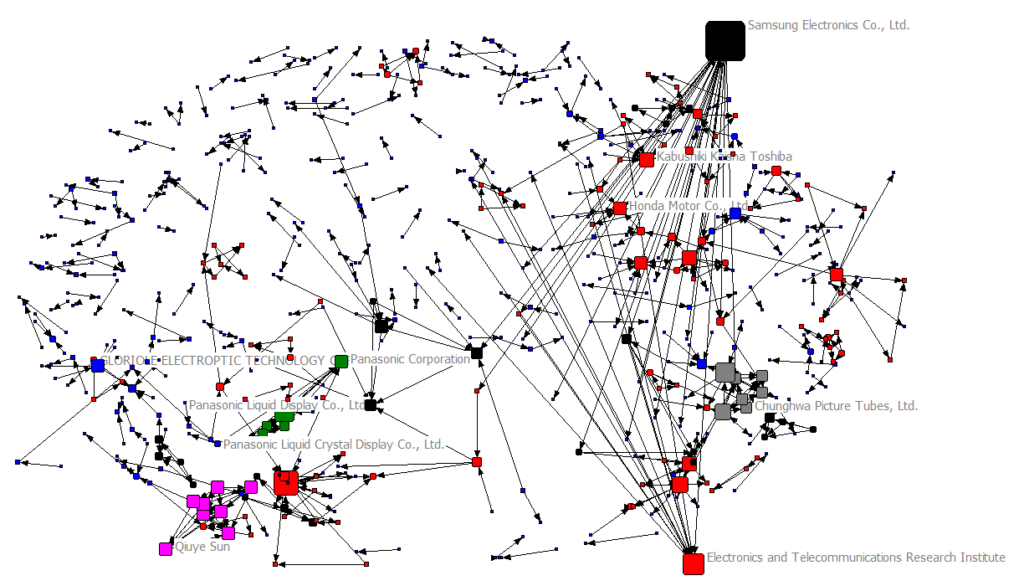
Figure 4: k-core with degree
In figure 4 we can see the colours distributed according to k-core analysis and the sizes according to degree. A total of 6 cores were made. We can see that the degree of the nodes is highly related to the core in which it is placed. The red nodes are overall with an average value of degree which is not generally the least in the network. The pink nodes also have similar values of degree in the network diagram.
Network Analysis
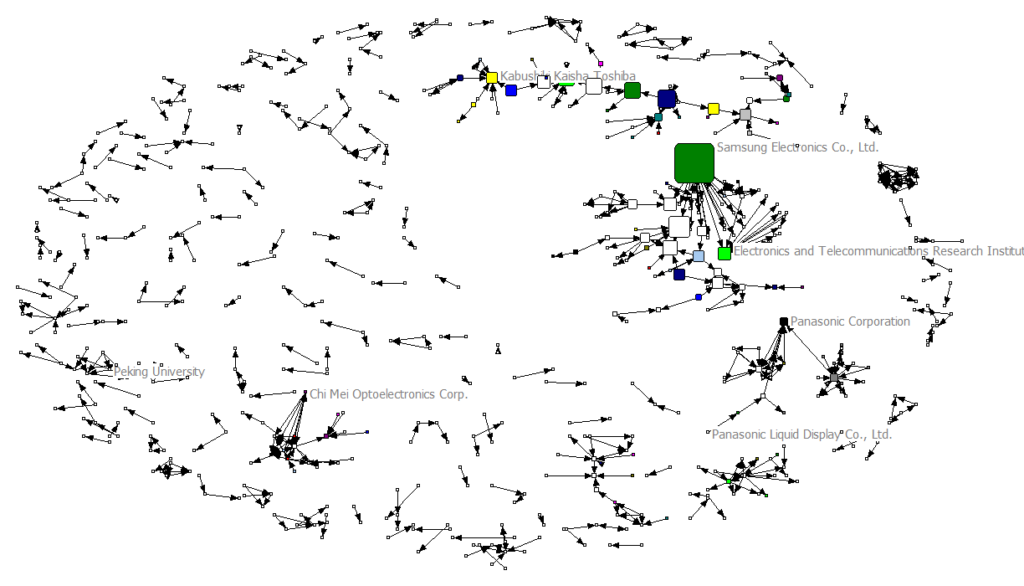
Figure 5: Employees and betweenness
Figure 5 is plotted taking betweenness as the source of size of the nodes and the employees as the reference for colours. Betweenness is a centrality proportion of a vertex inside a diagram (there is additionally edge betweenness, which isn’t talked about here). Betweenness centrality measures the occasions a hub goes about as a scaffold along the briefest way between two different hubs. It was presented as a measure for evaluating the control of a human on the correspondence between different people in an informal community by Linton Freeman.
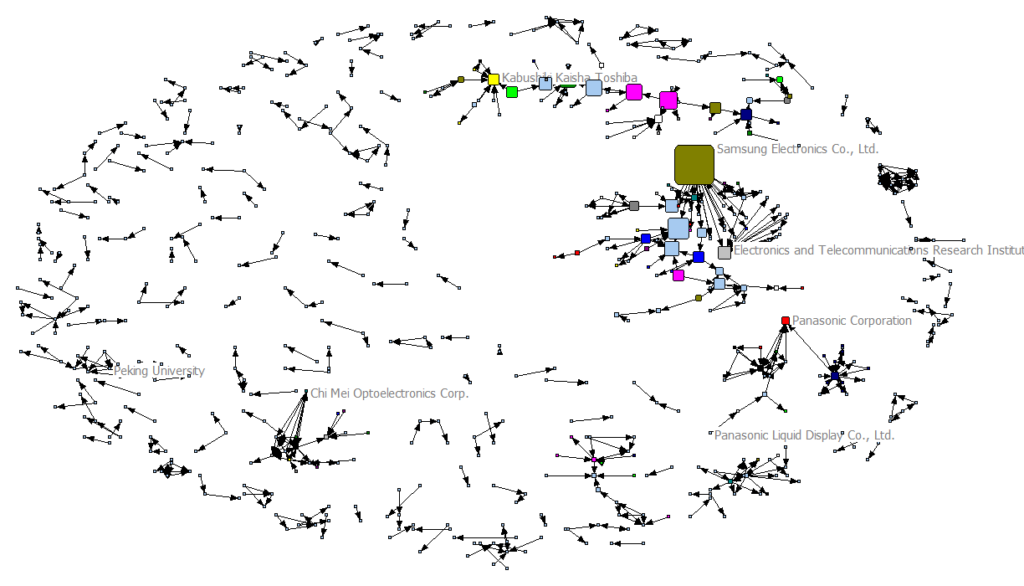
Figure 6: Total assets and betweenness
Figure 6 keeps the betweenness criteria unchanged, but it changes the colour to be based from employees to total assets. We can see that in both the cases the variance in total assets and employees is similar pointing that employees also denote the presence of assets in a node. From here we try to see how changing the centrality criteria affects the network diagram.
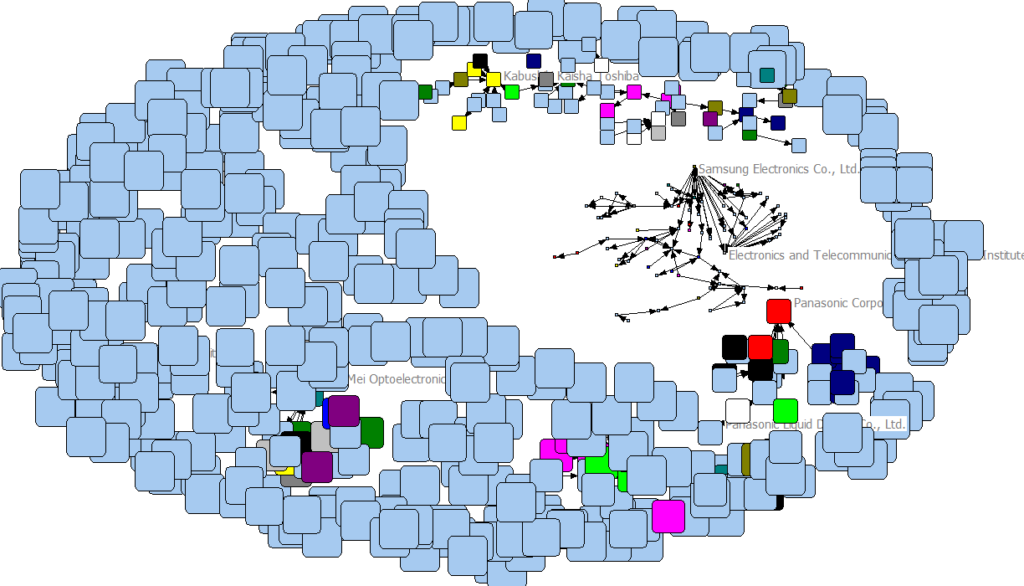
Figure 7: Total assets and closeness
Figure 7 relates total assets to closeness. In an associated chart, the standardized closeness centrality (or closeness) of a hub is the normal length of the most limited way between the hub and every single other hub in the diagram. In this manner the more focal a hub is, the closer it is to every single other hub. Closeness was characterized by Alex Bavelas (1950) as the equal of the farness. Taking separations from or to every other hub is unessential in undirected charts, though it can create very surprising outcomes in coordinated diagrams (for example a site can have a high closeness centrality from active connection, yet low closeness centrality from approaching connections).
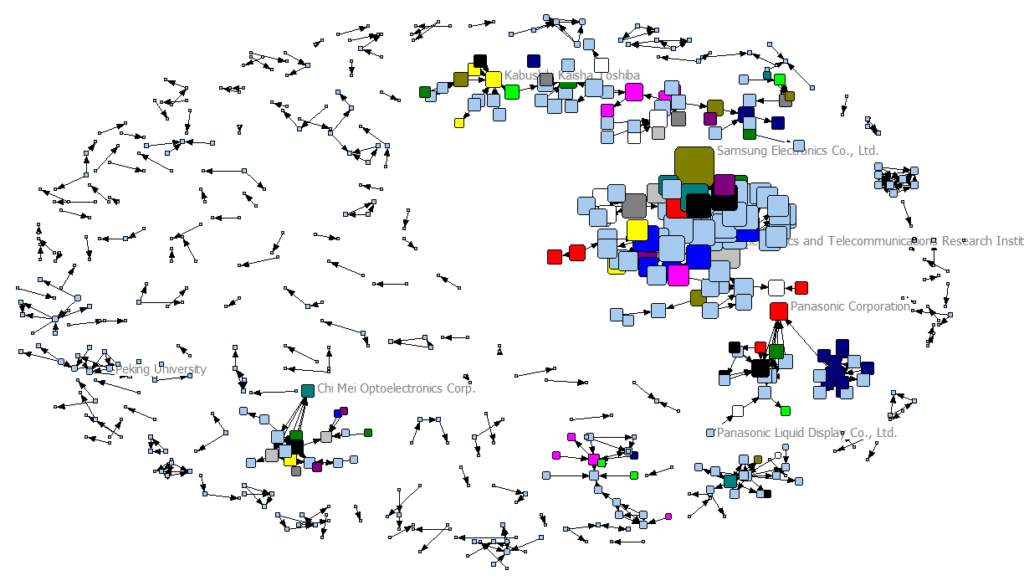
Figure 8: Total assets and hormonic closeness
In figure 8 we move to a harmonic measure of closeness. In a (not really associated) chart, the consonant centrality switches the aggregate and proportional tasks in the meaning of closeness centrality. The harmonic measure makes the graph much easy to interpret and it is easy to understand how centrality is distributed in the graph.
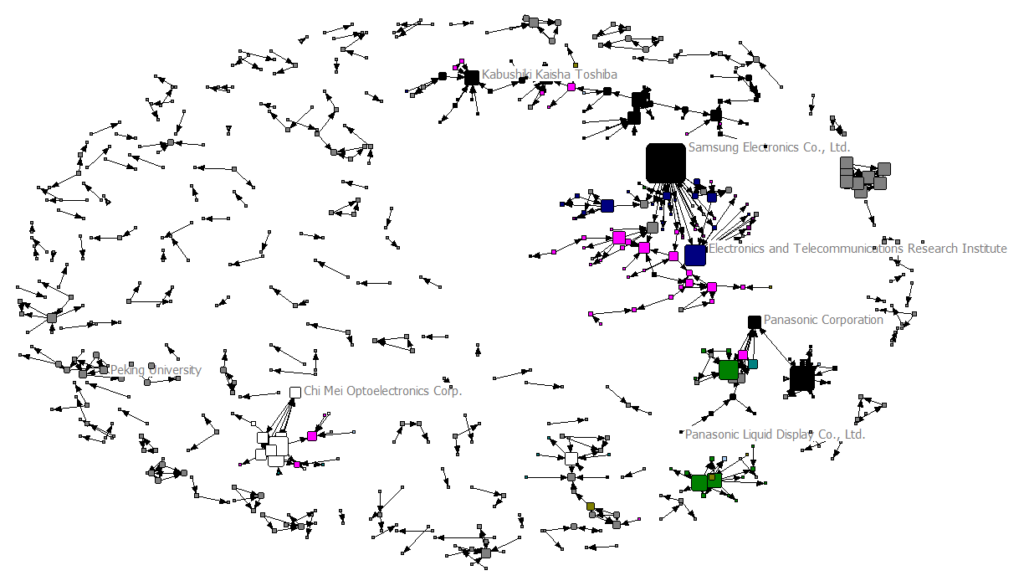
Figure 9: Country codes
Figure 9 shows how the network is distributed along the countries. We can see the that many of the related nodes of a single company are present in the same company.
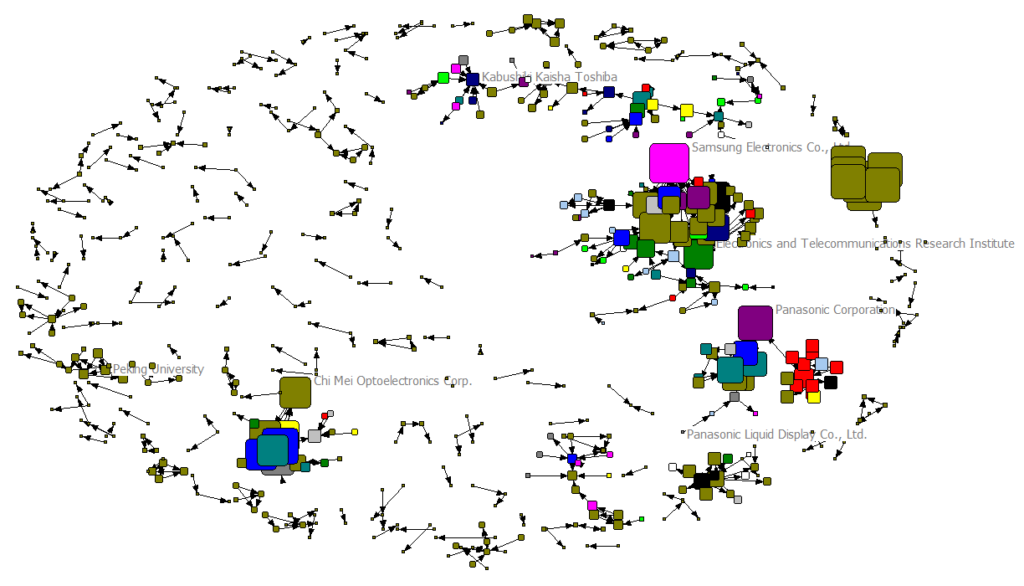
Figure 10: Turnover Lay and 2 local eigen vectors
Figure 10 shows how the turnovers of the company are distributed along the nodes. We use eigen vectors as the measure of centrality. Eigenvector centrality (likewise called eigencentrality) is a proportion of the impact of a hub in a system. It allocates relative scores to all hubs in the system dependent on the idea that associations with high-scoring hubs contribute more to the score of the hub being referred to than equivalent associations with low-scoring hubs. Google’s PageRank and the Katz centrality are variations of the eigenvector centrality.
Conclusion and Innovation Risk
Panasonic is a worldwide commonly recognized name with an overall buyer base, and has held this situation since the center of the only remaining century. Be that as it may, changes in innovation have radically adjusted spending in customer hardware. More individuals watch content through their cell phones and tablets than on TV [6]. This has introduced customary Japanese gadgets firms with significant difficulties.
Luckily Panasonic is a differentiated organization, creating in excess of 70 percent of its worldwide income outside purchaser markets [7]. It is advertising pioneer in numerous imperative and developing B-to-B markets, for example, in-flight stimulation, rough note pads, and high-brilliance laser projectors. To come back to development, Panasonic has embraced a worldwide methodology of contributing to grow its B-to-B business, including the arrangement of administrations and arrangements. Tragically, the Panasonic brand is principally connected with its buyer legacy, and the acknowledgment of the Panasonic brand is fundamentally higher with individuals over forty years old than for individuals in their twenties. As more youthful individuals turn into the leaders of tomorrow, there is a hazard that the Panasonic brand won’t be considered routinely in B-to-B buys.
The promoting test for Panasonic is to expand its image acknowledgment outside conventional shopper markets to improve it known as a solid B-to-B player in chose markets [8]. The conventional brand estimations of development and quality should be kept up, and Panasonic’s quality in shopper markets ought to be regarded.
Panasonic endures every one of the weights of an inheritance brand, with a different arrangement of organizations it’s amidst reworking, and a mindfulness factor that is as expansive as it’s dated [9]. In any case, it additionally has clients, and not the benevolent that go for it when advanced new companies guarantee they’ve earned dependability by giving something without end for nothing; they’re paying clients, and a great deal of them are organizations, which manages it a huge chance to expand upon those connections through development. The products of that concentration in North America were apparent at CES2015.
These advancements required new reasoning, however the board forms that crossed divisional storehouses, commitment with the outer tech environment (like purchasing organizations, on account of the recieving wire essential for the climate application), and making new capacities that had at no other time been a piece of the organization’s image guarantee.
REFERENCES
- Kazuhiro tsuga – president, panasonic corporation. (2015). Boardroom Insiders Profiles,
- Laurent abadie – chairman and CEO, panasonic europe limited, panasonic corporation. (2016). Boardroom Insiders Profiles,
- Panasonic corporation of north america. (2016). (). Boca Raton: Netwise Data.
- Panasonic corporation (6752) – power – deals and alliances profile. (2019). (). London: Global Data Ltd.
- Tsujimoto, M., Matsumoto, Y., & Sakakibara, K. (2014). Finding the ‘boundary mediators’: Network analysis of the joint R&D project between toyota and panasonic. International Journal of Technology Management, 66(2-3), 120-133. doi:10.1504/IJTM.2014.064598
- Panasonic, scrum ventures to foster innovation. (2018). Telecomworldwire,
- Panasonic avionics corporation pursues innovation alongside plug and play tech center: Panasonic avionics partners with plug and play tech center to help select and guide the best of breed startups in the travel & hospitality space. (2016, ). PR Newswire
- nvestorIdeas.com: #CES2016 #Tech innovation highlights; #GoPro, #Panasonic, #NXT_ID, #Samsung, #Highpower (2015). . Chatham: Newstex.
- Panasonic corporation (6752) – clean technology – deals and alliances profile. (2015). (). London: Global Data Ltd.
Looking for best Statistics Assignment Help. Whatsapp us at +16469488918 or chat with our chat representative showing on lower right corner or order from here. You can also take help from our Live Assignment helper for any exam or live assignment related assistance.